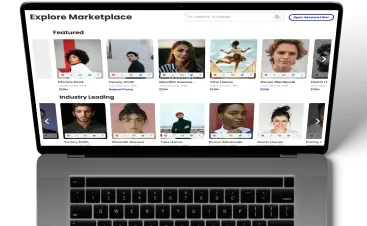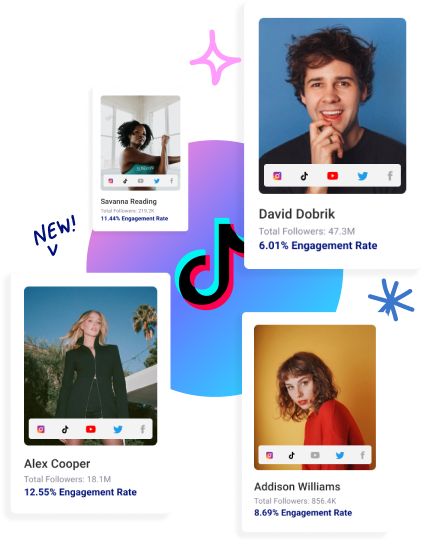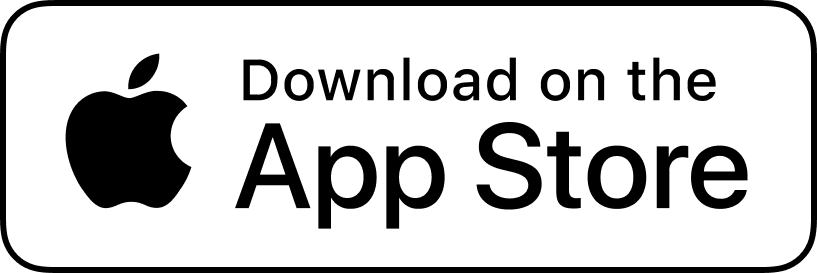Influencer marketing has quickly become one of the most effective strategies for businesses looking to grow their brand, increase engagement, and drive sales. For small-to-midsize e-commerce brands, influencers provide an opportunity to connect with target audiences in an authentic and impactful way.
With the right foundation and tools–like this guide and an advanced website builder–influencer marketing can be a game-changer. Here’s your ultimate checklist to ensure success.
The ultimate influencer marketing checklist
Below, we walk you through 13 items you should check off as a new business to get started with influencer marketing. From defining goals all the way through tracking influencer marketing campaign performance, this is your ultimate guide to success.
1. Define your goals
Before diving into influencer marketing, it’s important to establish clear and measurable objectives. Questions you should ask yourself to help define your goals include:
- Do you want to increase brand awareness?
- Are you aiming to drive sales and conversions?
- Are you looking to build social proof and credibility?
- Do you want to grow your brand’s social media following?
Having well-defined goals is essential for guiding your strategy and helping you measure success effectively.
2. Identify your target audience
You can’t choose the right influencers without knowing who your target audience is. It’s best to define your ideal customer based on factors like:
- Demographics (age, gender, location, income level)
- Interests and behaviors
- Social media platform preferences
Choosing influencers who match your target audience ensures that your message reaches the right people who are most likely to engage with your brand.
3. Choose the right social media platforms
Different platforms attract different types of audiences and influencer styles, which will affect which influencers you want to work with.
Here’s a quick, at-a-glance guide for choosing platforms:
- Instagram for visual content, lifestyle, beauty, and fashion brands.
- TikTok for short-form, engaging videos and younger audiences.
- YouTube for long-form content, tutorials, and in-depth reviews.
- Facebook for community-driven engagement and longer-form discussions.
- Twitter (X) for quick updates, discussions, and news-related content.
Based on your brand’s content style and marketing objectives, you can choose the platform or platforms that feel like the best fit.
4. Research and select the right influencers
Sure, follower count is important. But choosing the right influencer involves so much more than just that. Here are other factors to think about when considering which influencers to work with:
- Relevance: Does the influencer’s niche align with your brand?
- Engagement rate: Are their followers actively engaging with content?
- Authenticity: Do they build real relationships with their audience?
- Previous brand collaborations: Have they worked with similar brands before?
- Content quality: Is their content high quality and aligned with your brand image?
Ultimately, your business needs and goals should guide the influencers you pitch.
5. Decide on collaboration types
From simple, one-off sponsored posts to ongoing partnerships, there are multiple ways to collaborate with influencers. Here are some different types of collaborations you should know about:
- Sponsored posts: Paying influencers to promote your product on their social media.
- Affiliate marketing: Providing influencers with a commission for sales generated through their referral links.
- Product seeding: Sending free products to influencers in exchange for exposure.
- Giveaways: Partnering with influencers to host giveaways to drive engagement.
- Brand ambassadorships: Forming long-term relationships with influencers who consistently promote your brand.
Again, you should choose here based on what fits your business goals, as well as your budget.
6. Set a budget
Speaking of budget… Influencer marketing costs can vary widely depending on factors like platform, influencer reach, and campaign type.
Some things you might have to pay for when doing influencer marketing include:
- Influencer fees (flat rate or performance-based payments)
- Product costs (for gifted products or samples)
- Ad spend (if amplifying influencer content with paid ads)
- Tracking and management tools
As a new business just starting out with influencer marketing, you should start small and scale up as you see results.
Pro-tip: Many micro-influencers offer cost-effective engagement rates, as they’re also getting started with their business.
7. Craft a clear campaign brief
It’s essential that you communicate your expectations with the influencers you work with to make sure you get your money’s worth. A well-documented campaign brief helps influencers understand what you expect out of your collaboration.
This document should include:
- Campaign objectives and key messaging
- Product or service details
- Content guidelines and visual branding
- Required hashtags, mentions, and disclaimers
- Deadlines and post-scheduling requirements
Remember, the clearer your guidelines, the smoother the collaboration will be.
8. Ensure legal and compliance considerations
Influencer marketing is a regulated industry, so both you and the influencers you work with will have to be familiar with and comply with disclosure guidelines. Make sure:
- Influencers use #ad or #sponsored for paid collaborations.
- Contract terms are clearly outlined (payment, content rights, exclusivity clauses, etc.).
- FTC and platform-specific guidelines are followed.
Not only does this cover your tracks legally, but transparency also builds trust with your audience and protects your brand.
9. Track performance metrics
Once you have your first influencer campaign up and running, you have to see if it’s successful in order to figure out whether to keep doing more of the same or to make changes.
To measure the success of your campaign, track key performance indicators (KPIs), such as:
- Engagement rate: Likes, comments, shares, and saves.
- Click-through rate (CTR): How many users clicked on your link.
- Conversion rate: Sales or sign-ups generated.
- Reach and impressions: How many users saw your content.
- Return on investment (ROI): Comparing influencer costs to revenue generated.
You can use analytics tools built into social media platforms or tools like Google Analytics to collect and analyze data for future optimizations.
10. Repurpose influencer content
Once you’ve collaborated with an influencer, you can get the absolute most of your dollar by using the content they created for you again and again.
Here are some ways you can do that:
- Sharing influencer posts on your brand’s social media channels.
- Using influencer-generated content in paid advertisements.
- Featuring influencer reviews and testimonials on your website.
- Adding influencer content to email marketing campaigns.
Repurposing content extends the reach and longevity of your campaign while increasing ROI.
11. Leverage a website builder for a strong online presence
Successful influencer campaigns will drive traffic to your website, which is the foundation of your digital presence. To make sure that you make a good first impression on website visitors, make sure your site is:
- Optimized for conversions with clear calls-to-action (CTAs).
- Mobile-friendly for seamless user experience.
- SEO-optimized to rank in search engines.
- Integrated with social proof (customer reviews, influencer testimonials, etc.).
12. Build long-term relationships with influencers
Rather than treating influencer marketing as a one-time campaign, consider building ongoing relationships with influencers who align with your brand.
Long-term partnerships have a number of benefits, such as:
- Creating brand consistency and trust with audiences.
- Leading to more authentic endorsements over time.
- Improving cost efficiency by reducing the need for frequent influencer searches.
Building strong relationships fosters better collaboration and enhances credibility, so it’s highly worth considering working with the same influencers more than once.
13. Stay updated on influencer marketing trends
The influencer marketing landscape is constantly evolving, and it’s important to stay on top of things. You can keep up to date by:
- Keeping up with new social media features and algorithm changes.
- Experimenting with emerging platforms like Threads or BeReal.
- Testing AI-driven influencer marketing tools for data-driven insights.
- Monitoring competitor strategies for inspiration.
Adapting to trends helps brands remain competitive and maximize influencer partnerships.
Wrapping up
Influencer marketing is a powerful tool for small-to-midsize e-commerce brands, social media marketers, and influencers looking to grow their impact. By following this ultimate checklist, businesses can create strategic, results-driven campaigns that foster engagement, build brand trust, and drive sales.
Whether you’re launching your first influencer campaign or refining an existing strategy, having a structured approach ensures efficiency and success. With the right plan, influencer marketing can transform your brand’s reach and profitability in today’s competitive digital landscape.










